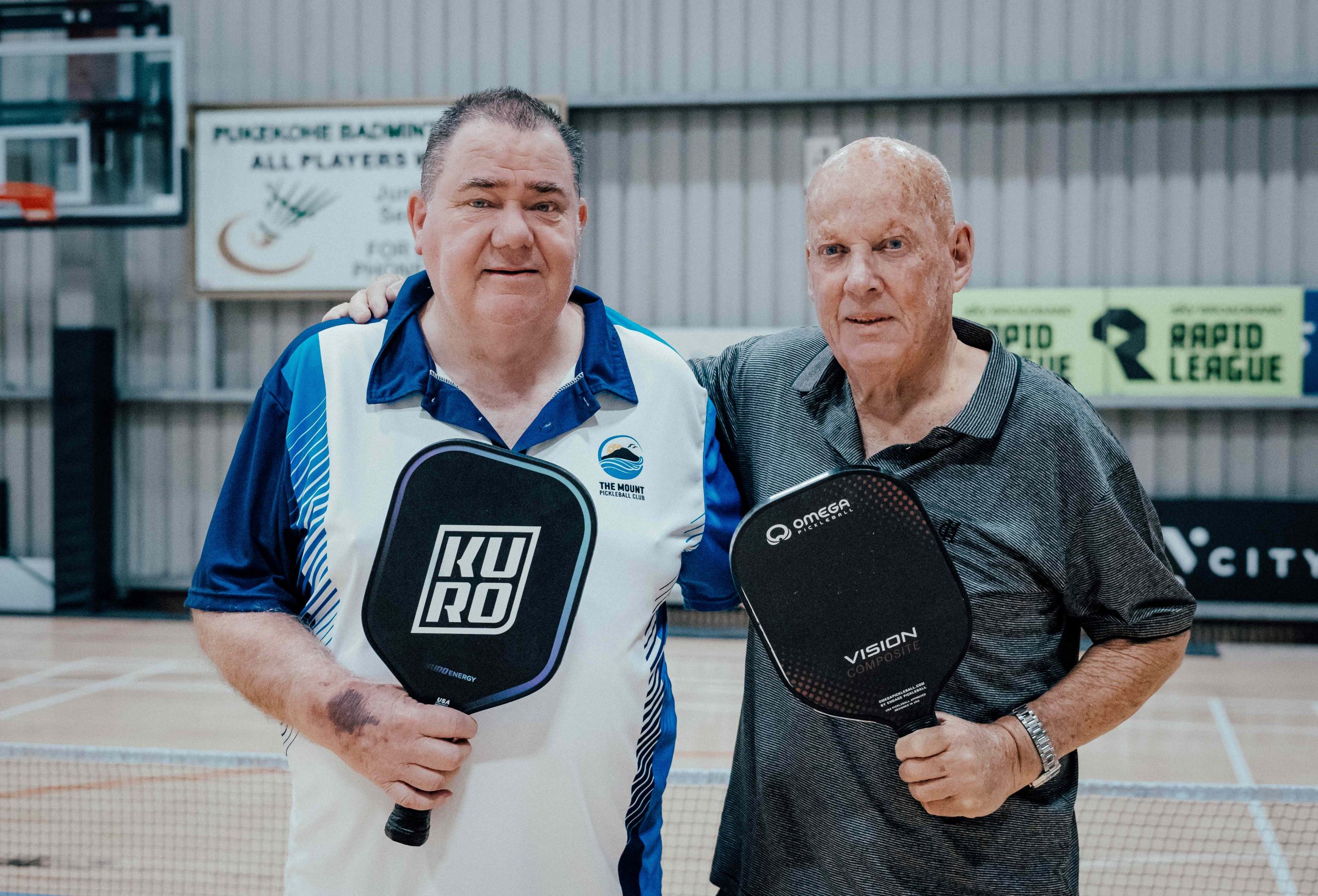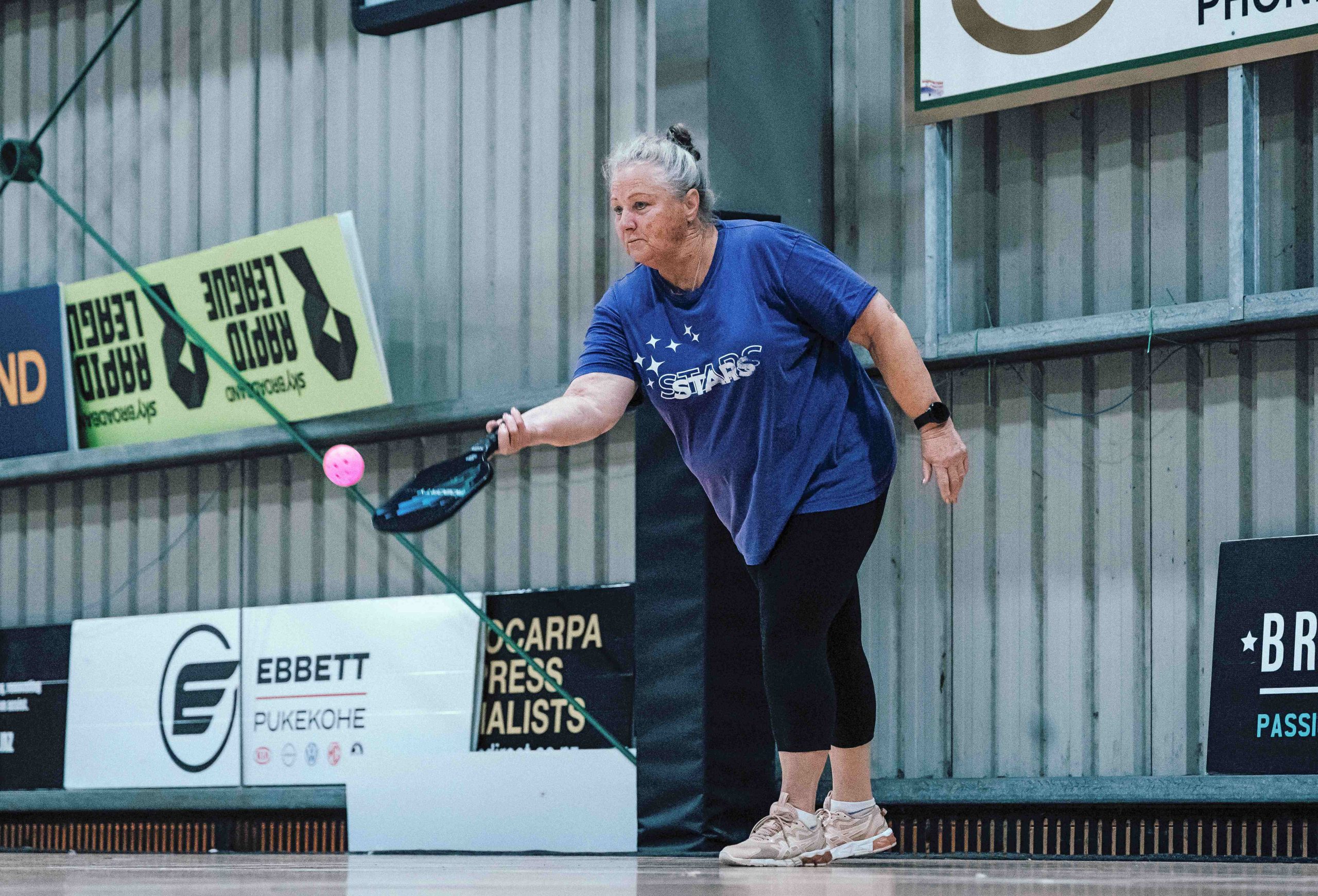|
Getting your Trinity Audio player ready...
|

Pickleball might sound like a tasty hors d’oeuvre paired with a sliver of cheese and a dash of chutney, but, in reality, it’s a social court game and a popular form of exercise for all ages. HELEN PERRY takes a look at the sport.
Described as a combination of tennis, badminton and table tennis or even as a big version of schoolyard patter tennis, pickleball has become the ‘in’ sport for growing numbers of people.
Seniors, in particular, have found it an ideal way to maintain fitness and enjoy socialising, especially when winter outdoor sports have been ruled out. That’s because it is mostly played indoors and gives a solid, but not unrealistic, workout.
An active pickleball club in Pukekohe has sessions on Monday and Friday mornings and Saturday afternoons, the latter attracting more working people for whom weekdays are inconvenient.
Pukekohe midweek organiser, Jeff Carr, said the club has between 80 and 100 players across the three days, mostly adults but also some teens.
Jeff became hooked on the sport three years ago after checking out the local group at the Franklin Pool and Leisure Centre.
“I’d just survived several years of cancer treatment and was in poor physical shape. Within six to eight months of pickleball, I was feeling terrific. It was a bit like playing patter tennis on steroids!”
At the outset, he was warned that the sport was addictive.
“I played once and kept going back. Yes, it was totally addictive and although it attracts a lot of seniors, newcomers shouldn’t be deceived by looks.
“One of my first opponents was an elderly lady who looked extremely frail to me. I thought this will be easy. She beat me hands down!”
Jeff said the good thing about pickleball is that indoor play means fitness – and socialising –can be maintained year-round.
Pickleball courts are similar in size to a doubles badminton court with a tennis-type net strung from side to side. The paddles are made of wood or composite material, while the coloured pickle ball is similar to a plastic wiffle ball.
“With smaller courts than those for tennis and the paddles also smaller and lighter than tennis rackets, pickleball is easier to play,” Jeff said.
“The underarm serve also helps in regards to strength.”
Now 84 years old, John Webb also took up the sport three years ago.
“I’d just returned to New Zealand from living in Australia and heard about a pickleball club in Papakura. I thought it would be a good way to make new friends, especially after Covid isolation.”
Subsequently, John went along to an evening session in Papakura.
“However, being a dark, wet night, I decided going out at that time wasn’t for me. Then, someone told me about Pukekohe’s daytime sessions.”
Now, John plays doubles at Pukekohe most Friday mornings, enjoying camaraderie and exercise.
“I’m one of the older players, but I like the mix of ages, and everyone is friendly. Some play socially, but there’s a younger competitive group too. It definitely attracts a wide mix.”
Fast facts
- Pickleball was created in 1965 by Joel Pritchard, Bill Bell and Barney McCallum in the state of Washington, USA.
- Joan Pritchard came up with the name “pickle ball”— a reference to the thrown-together leftover non-starters in the “pickle boat” of crew races.
- A newspaper interview hoax (by Joel Pritchard) claimed they named the game after the family dog, Pickles. Joel later confessed it was a joke.
- Serves must be underarm; the ball needs to bounce before being returned with the first two hits.
- Points can only be earned on the serve.




